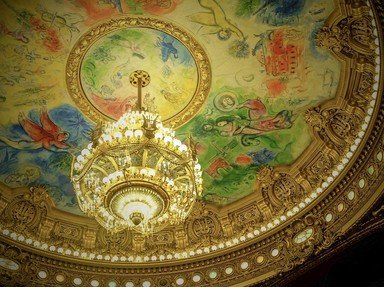Quiz Answer Key and Fun Facts
1. Welcome to the grand opening of the Museum of African-American Divas. Our private tour highlights and concentrates on the 'pioneer' divas, those incredibly courageous ladies who managed to have international careers long before Leontyne Price was born. This way, if you please...
Let us begin with this largely self-taught soprano. Born in Natchez, Mississippi in the mid-1820s, this incredible soprano was herself a slave; the product of the union of an African slave and a Seminole Indian woman, who was also a slave. This trailblazer was single-handedly responsible for the existence of all of the incredibly gifted ladies you will meet in the museum.
2. Some 20 years after our trailblazer's birth, this next prima donna was also born in Natchez, Mississippi in the 1840s. She was a formidable coloratura soprano who was hailed as the 'Queen of Staccato'.
3. We now come to perhaps the greatest diva of color of the nineteenth century. Born Matilda Joyner, the daughter of an ex-slave, she was dubbed 'Black Patti' in reference to the Italian-born Adelina Patti.
4. This contemporary of the 'Black Patti' may have been slightly overshadowed by her colleague's success, but she was still able to have a career, as she possessed a wide range and came to be known as the 'Double Voiced Queen of Song'.
5. We now come to the only 'duo' divas in the museum. Born in the early 1850's in Sacramento, these two sisters enjoyed long and successful careers under their father's supervision.
6. The Supreme Court's 1896 Plessy v. Ferguson decision in which black Americans were deemed 'separate but equal' made it even more challenging for singers of color to have a career. Nonetheless, this soprano, a committed teacher of young black artists, offered some hope.
7. Now that you have met our earliest pioneers, let us move on to one of the most well-known divas on the 20th century: Toscanini said that her voice was such that "one hears once in a hundred years." Which diva was this who, banned from singing in Constitution Hall because of her skin color, was forced to give a recital on the steps of the Lincoln Memorial?
8. This next diva, also as humble as our contralto, was born in Norfolk, VA in 1910. She established her career during the Harlem Renaissance, under the auspices of conductor Serge Koussevitzky, and was the founder of the Harlem School of the Arts.
9. Koussevitzky was also responsible for the career of this North Carolinian concert contralto. In fact, Koussevitzky said that this diva's voice was the human embodiment of the cello, which he played.
10. It seems that the color barriers were at last broken with this diva's career. Long before Leontyne Price's historic performance in 1961 at New York's Metropolitan Opera, this Georgian-born coloratura soprano had desegragated the San Francisco Opera and was the first singer of color to sing at Milan's famed La Scala opera house, as well as being the first black soprano to sing at 'the Met'.
Source: Author
triviasoprano
This quiz was reviewed by FunTrivia editor
agony before going online.
Any errors found in FunTrivia content are routinely corrected through our feedback system.
